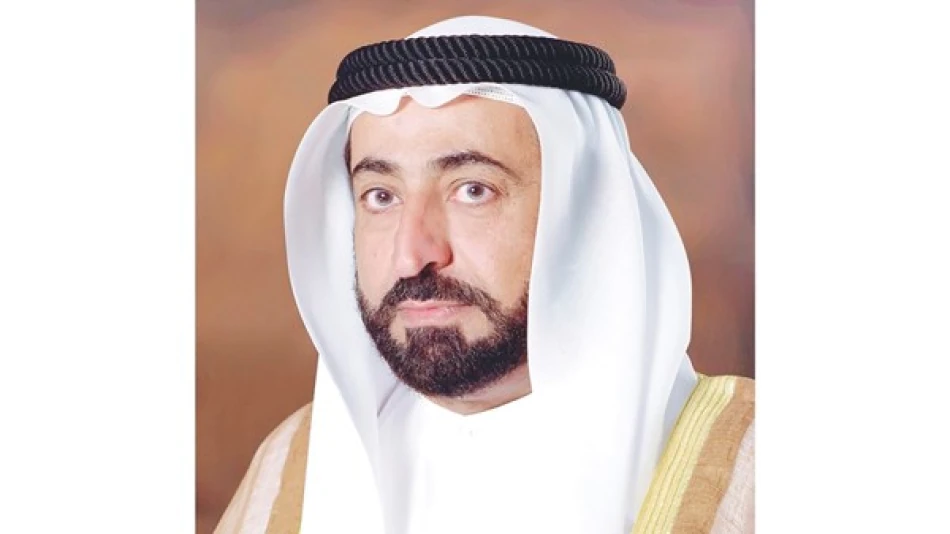
Sharjah Ruler Aims to Secure UNESCO Listing for Dibba Al Hisn Castle After Renovation
Sharjah Pursues UNESCO Recognition for Historic Al-Hosn Castle in Major Heritage Push
The emirate of Sharjah is advancing plans to secure UNESCO World Heritage status for the historic Al-Hosn Castle in Dibba Al-Hisn, a move that could cement the UAE's position as a regional leader in cultural preservation. The fortress houses archaeological layers spanning three distinct historical periods, representing one of the most complex heritage sites in the Gulf region.
A Multi-Layered Archaeological Treasure
Sheikh Dr. Sultan bin Mohammed Al Qasimi, Ruler of Sharjah, announced during a live television program that the castle contains artifacts from three successive eras: the Hormuz period, Portuguese colonial rule, and the ancient Qawasim dynasty. This stratified historical record makes the site particularly valuable for understanding the Gulf's complex maritime history.
"We have gathered all existing artifacts from these three periods—Hormuz, Portuguese, and Qawasim—and preserved them within this fortress," Sheikh Sultan explained. The site's unique three-story structure presents each historical layer as a distinct archaeological level, creating challenges for preservation but offering unprecedented insights into regional history.
Engineering Modern Protection for Ancient Heritage
The development includes innovative protective infrastructure, with a large decorative canopy system designed to shield both visitors from intense heat and artifacts from rain damage. This approach reflects growing expertise in Gulf heritage preservation, balancing tourist accessibility with conservation requirements.
Strategic Positioning in Global Heritage Landscape
Sharjah's UNESCO bid positions the emirate alongside other Gulf states pursuing international cultural recognition. The UAE already hosts the Al Ain Oasis World Heritage site, while neighboring countries like Oman and Bahrain have successfully leveraged UNESCO status to boost cultural tourism revenue.
Initial UNESCO consultations have reportedly yielded positive responses, suggesting the application has strong potential for approval. This would mark a significant achievement for the UAE's northern emirates, traditionally overshadowed by Dubai and Abu Dhabi in international recognition.
Economic and Cultural Implications
UNESCO designation typically generates substantial tourism revenue and international prestige. Qatar's Al Zubarah Archaeological Site, inscribed in 2013, has become a cornerstone of the country's cultural tourism strategy. Sharjah appears to be following a similar model, using heritage preservation as both cultural preservation and economic development.
Comprehensive Urban Heritage Project
The Al-Hosn Castle development extends beyond the main fortress to include restoration of a square-shaped castle, traditional markets, and heritage houses in surrounding areas. This comprehensive approach mirrors successful heritage district developments in cities like Istanbul and Prague, where integrated historical zones create immersive cultural experiences.
The project represents Sharjah's broader commitment to positioning itself as the UAE's cultural capital, complementing Dubai's commercial focus and Abu Dhabi's political prominence. Sheikh Sultan's emphasis on community patience suggests the development timeline extends several years, indicating substantial investment in archaeological accuracy over speed.
Regional Heritage Competition Intensifies
The timing coincides with intensifying regional competition for cultural tourism. Saudi Arabia's massive heritage investments under Vision 2030, including the Al-Ula development, have raised stakes across the Gulf. Sharjah's UNESCO strategy offers a cost-effective alternative to mega-projects, leveraging existing archaeological assets for international recognition.
Success would establish Dibba Al-Hisn as a significant cultural destination, potentially transforming the northern emirates' tourism profile and demonstrating how smaller emirates can compete globally through heritage preservation rather than architectural spectacle.
 Layla Al Mansoori
Layla Al Mansoori







